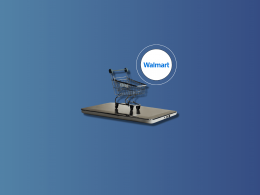Did you know that customer service can make or break your ecommerce business? Here’s a not so) fun fact for you: only 48% of customers say they generally trust companies and 66% of customers expect companies to understand their needs and expectations.
Major trust issues, right? Well, this simply means that outstanding customer service is no longer just a competitive advantage; it’s necessary for survival and growth in the ecommerce landscape.
If you are seeking to optimize your existing customer service operations or are starting from scratch, we will unravel the secrets to providing top-notch ecommerce fulfillment services and customer service that leaves your customers satisfied, engaged, and eager to return more.
Let’s embark on this journey and discover how to approach ecommerce customer service (and improve those trust issues)!
Contents:
1. Streamline order processing and fulfillment
2. Invest in a reliable order management system
3. Use appropriate packaging materials
4. Ensure proper labeling and documentation
5. Collaborate with trusted shipping carriers
6. Send automated shipping notifications
7. Implement real-time order tracking
8. Resolve order issues promptly
9. Simplify return policies and procedures
10. Offer convenient return options
11. Facilitate prompt refunds or exchanges
Streamline order processing and fulfillment
Efficient order processing and fulfillment are essential for delivering a seamless customer experience. By streamlining these processes, you can ensure timely deliveries, minimize errors, and enhance customer satisfaction.
Consider professional fulfillment services to optimize your operations and reduce logistical challenges. These services can handle inventory management, pick and pack orders, and manage international shipping, allowing you to focus on core business activities.
Streamlining order processing is critical to fulfillment logistics in business. It involves optimizing the entire journey from when a customer orders to the successful delivery of the products.
Let’s explore some additional strategies and examples.
Centralized inventory management
Implement an inventory management system that provides real-time visibility into stock levels, automates inventory updates, and sends alerts when products are running low. This helps prevent stockouts, eliminates overselling, and ensures accurate order fulfillment.
Efficient order routing
Take advantage of intelligent order routing mechanisms to assign orders to the most appropriate fulfillment center or warehouse based on proximity, inventory availability, and shipping cost. This optimizes the fulfillment process by reducing shipping distances, transit times, and prices.
Pick and pack optimization
Optimize the pick and pack process to maximize efficiency. Arrange your warehouse layout strategically, ensuring easy access to popular products. Utilize barcode scanning technology or automation solutions to streamline the picking process, minimizing errors and improving order accuracy.
Batch processing
Group orders with similar characteristics or shipping destinations for batch processing. This approach minimizes the time spent on order handling, packaging, and labeling, allowing faster fulfillment and improved efficiency.
Same-day or expedited shipping
Offering same-day or expedited shipping options can be a competitive advantage. Implement a system that enables fast order processing and collaborates with shipping carriers to deliver packages within tight timelines. This option is particularly appealing to customers who value speed and urgency.
Invest in a reliable order management system
An order management system (OMS) centralizes and automates various aspects of order processing, including inventory management, order tracking, and customer communication.
This helps eliminate manual errors, improves order accuracy, and speeds up the fulfillment process. With an efficient order management system, you can efficiently manage multiple fulfillment center locations and track orders from when they are placed until they are delivered.
An order management system is the central hub for managing and tracking orders
throughout the fulfillment process. Here are 6 aspects to consider when investing in an OMS.
1. Order consolidation
An effective OMS should consolidate orders from multiple sales channels into a single interface, allowing you to manage and process them efficiently. Whether customers place orders through your website, marketplace platforms like Amazon and eBay, or offline channels, the OMS should aggregate all orders for streamlined management.
2. Inventory synchronization
A reliable OMS integrates seamlessly with your inventory management system, ensuring accurate and real-time inventory updates. This synchronization prevents overselling, eliminates stockouts, and enables you to fulfill orders promptly without manual intervention or errors.
3. Workflow automation
Look for an OMS that offers workflow automation capabilities. This includes automating tasks such as order routing, prioritization, and allocation to specific warehouses or fulfillment centers based on predefined rules. Automation reduces manual effort, speeds up order processing, and minimizes the risk of errors.
4. Integration with shipping carriers
An OMS that integrates with shipping carriers’ systems allows you to generate shipping labels, track shipments, and provide real-time shipping updates to customers. Integration with major carriers such as FedEx, UPS, or USPS ensures seamless coordination between the OMS and the carrier’s systems, streamlining the shipping process.
5. Customer communication
An OMS should facilitate effective communication throughout the order fulfillment journey. It should enable automated order confirmation emails, shipping notifications with tracking details, and order status updates. Keeping customers informed at each stage builds trust, reduces inquiries, and enhances the overall customer experience.
6. Scalability and flexibility
The OMS should handle your business’s growth and adapt to changing requirements. Whether you’re processing hundreds or thousands of orders daily, it should accommodate increasing order volumes without compromising performance or functionality.
Use appropriate packaging materials
Choosing suitable packaging materials based on the size, weight, and fragility of the products being shipped ensures a positive unboxing experience for customers. It reduces the likelihood of returns or customer dissatisfaction due to damaged items.
Consider the nature of your products and select packaging materials that provide adequate protection during transit. Bubble mailers, corrugated boxes, air pillows, and foam inserts are commonly used packaging materials.
Invest in high-quality materials that align with your product’s requirements, ensuring that your customers receive their orders in pristine condition. Using appropriate packaging materials is essential for ensuring the safe and secure delivery of products while minimizing damage and reducing shipping costs.
How can businesses use appropriate packaging materials?
Right-sized boxes
Select boxes appropriately sized for the shipped products. Avoid oversized boxes, as they can increase shipping costs and leave extra space for items to move around during transit. Use packaging calculators or tools to determine the optimal ecommerce boxes for shipping size for each order, ensuring a snug fit and reducing the risk of damage.
Protective cushioning
Utilize protective cushioning materials to safeguard items from shocks, impacts, and vibrations during shipping. Cushioning materials include bubble wrap, air pillows, foam inserts, packing peanuts, or corrugated inserts. These materials help absorb shock and provide a buffer against potential damage.
Inner packaging
Wrap individual items or delicate components within the package to protect them from scratches, breakage, or shifting during transit. Use tissue paper, foam sheets, or cardboard dividers to separate and secure items within the box.
Void fillers
Fill empty spaces within the box with void fillers to prevent items from moving around during shipping. Void fillers can include air pillows, crumpled paper, or biodegradable packing peanuts. These filters help maintain stability and reduce the risk of damage caused by shifting items.
Waterproofing
Protect items from moisture or water damage using packaging materials. This is especially important for products susceptible to water damage, such as electronics or paper-based items. Consider using plastic or polyethylene bags or shrink wrap to provide additional protection.
Ensure proper labeling and documentation
Related to proper packaging are accurate labeling and documentation. Doing this creates seamless order processing and minimizes errors. Packages should be labeled with the correct shipping address, tracking number, and any other relevant details. You can use Canva labels for this purpose.
Ensure that the packaging slips and invoices are accurate and included within the package. This attention to detail reduces the chances of misdeliveries and confusion during the fulfillment process.
Collaborate with trusted shipping carriers
Partnering with reliable shipping carriers is essential for ensuring timely and secure deliveries. Research reputable shipping carriers that offer competitive rates and have a convenient record of delivering packages on time.
Consider integrating your ecommerce platform with third-party fulfillment services, such as ShipBob or Fulfillment by Amazon (FBA). These services handle the entire fulfillment process, including inventory storage, order processing, picking, packing, and shipping. You can benefit from their efficient operations and extensive network of fulfillment centers.
Send automated shipping notifications
Keeping customers informed about their order’s progress is vital for exceptional service. Implement automated shipping notifications that inform customers when their orders are processed, shipped, and out for delivery. These notifications can be sent via email or SMS, providing customers real-time updates without manual intervention.
Sending automated shipping notifications is a valuable practice that keeps customers informed about the progress of their orders and enhances their overall experience. Here are examples of ways to send regular and automated shipping notifications.
Order confirmation email
Upon receiving an order, businesses can send an automated email that includes relevant details such as the order number, item(s) purchased, shipping address, and estimated delivery date. This initial email sets the foundation for subsequent shipping notifications.
Shipment confirmation email
An automated shipment confirmation email can be sent once the order is packed and ready for shipment. This email should include the tracking number and a direct link to the carrier fulfillment company’s tracking page. Customers can easily click the link to access real-time tracking updates for their package.
Out-for-delivery notification
When the package is out for delivery, businesses can send an automated notification to customers. This notification informs customers that their package is coming and provides an estimated delivery time. It helps customers plan their day and anticipate the arrival of their orders.
Delivered confirmation email
After the package has been successfully delivered, an automated delivered confirmation email can be sent to customers. This email serves as a final notification and confirms that the box has reached its destination. It reassures customers to know their order has been delivered.
SMS notifications
Businesses can also send automated shipping notifications via SMS. These notifications can include order confirmation, shipment updates, and delivery notifications. SMS notifications are particularly effective for time-sensitive updates, as customers are more likely to receive and read text messages promptly. Using an SMS gateway for automated notifications, you can ensure that important updates reach their customers quickly and efficiently.
Order status updates on website
This self-service option eliminates the need for customers to reach out to customer support for updates and provides a convenient way for them to stay informed.
Implement real-time order tracking
Providing customers with real-time order tracking information keeps them informed and engaged throughout the fulfillment process. Integrate an ecommerce fulfillment provider with a tracking feature into your ecommerce platform or leverage third-party shipping services that offer tracking capabilities.
This allows customers to monitor the status of their orders, ensuring transparency and trust. Platforms like Shopify and WooCommerce offer tracking integrations, enabling you to provide real-time updates effortlessly.
Let’s look at a few more examples.
Ecommerce platform integration
Ecommerce platforms such as Shopify, WooCommerce, and Magento, offer built-in or plugin-based order tracking capabilities. Customers can track shipments, view estimated delivery dates, and access tracking numbers directly from their order history page.
Third-party tracking services
Integrating your ecommerce fulfillment company with third-party tracking services, such as 17track.net, AfterShip, or Tracktry, can provide a comprehensive order-tracking experience. These services support tracking for multiple carriers and consolidate tracking information from different sources, allowing customers to track all their orders in one place.
Carrier tracking integration
Shipping carriers like FedEx, UPS, and DHL offer tracking services that can be integrated into your platform.
Mobile tracking apps
Developing a dedicated mobile app for your ecommerce business with order-tracking functionality can provide a seamless tracking experience for customers. The app can include push notifications for order status updates, allowing customers to track their orders conveniently from their mobile devices.
SMS tracking notifications
Implementing SMS notifications with tracking updates can keep customers informed. Once an order is shipped, an automated SMS can be sent to the customer with the tracking number and a link to the tracking page.
Branded tracking pages
Create a branded tracking page on your website where customers can enter their order details or tracking numbers to access real-time tracking updates.
Resolve order issues promptly
Occasionally, order issues may arise, such as incorrect items, damaged packages, or delivery delays. It is crucial to address these issues promptly and efficiently—clear channels for customers to report problems, such as a dedicated customer support email or chat. Train your customer service team to handle order-related issues effectively, ensuring swift resolutions and customer satisfaction.
Resolving order issues promptly is crucial for maintaining customer satisfaction and loyalty. Some examples of how businesses can effectively handle and resolve order issues include:
Dedicated customer support channels
Provide multiple channels for customers to reach out and report order issues through email, phone, live chat, or social media platforms. Ensure these channels are staffed with knowledgeable and responsive customer support representatives who can quickly address customer concerns.
Quick response time
Aim to respond to customer inquiries and complaints as soon as possible. Establish a target response time and strive to meet or exceed it consistently. This demonstrates to customers that their concerns are a priority and shows your commitment to resolving issues promptly.
Active listening and empathy
Allow customers to express their concerns fully and demonstrate understanding and empathy towards their situation. This builds rapport and reassures customers that their concerns are being heard.
Swift problem resolution
Take immediate action to resolve the border issue quickly. Depending on the problem, it can be resolved by issuing a refund, arranging for a replacement shipment, or providing a suitable resolution that meets the customer’s needs. Prioritize problem resolution to minimize any inconvenience.
Proactive customer notification
If an order has a delay or unexpected issue, proactively notify the customer about the situation. Inform them of the problem, the steps to resolve it, and any impact on the delivery timeline. Proactive communication demonstrates transparency and helps manage customer expectations.
Follow-up and feedback
After resolving the issue, follow up with the customer to ensure their satisfaction. Showing genuine concern for customer satisfaction and addressing any issues can turn a negative experience into a positive one.
Simplify return policies and procedures
Having a specific and customer-friendly return policy is crucial for ecommerce businesses. Simplify your return customers’ step steps customers need to follow to initiate returns. Keep the process hassle-free by providing return labels or prepaid return shipping options.
Clearly communicate your return policy to customers, ensuring it is easily accessible on your website or included in order confirmation emails. Make sure the policy is straightforward, concise, and easy to understand. Include details such as the timeframe for returns, acceptable conditions for returns, and any associated fees or requirements.
Provide clear and concise instructions on how to package and return items. Include step-by-step instructions, including any necessary documentation or forms that need to be included with the return. Visual aids or videos can also be helpful in guiding customers through the return process.
Offer convenient return options
Flexibility in return options can significantly impact customer satisfaction. Consider offering multiple return methods, such as mail-in returns, drop-off at local locations, or exchanges at physical stores if applicable.
Offering convenient return options is an essential aspect of ecommerce fulfillment customer service. It provides customers with peace of mind and a sense of trust in their purchasing decisions. Businesses can offer convenient return options in many ways, let’s explore them.
Multiple return channels
Provide customers with various channels through which they can initiate returns. This can include online return request forms, email, phone, or live chat. Offering multiple channels accommodates different customer preferences and makes it easier for them to initiate the return process.
Prepaid return labels
Simplify the return process by offering prepaid return labels. Including a return shipping label with the original shipment or providing customers with a printable label via email streamlines the return process and eliminates the need for customers to find and pay for return shipping. Prepaid labels make it convenient for customers to send back items they wish to return.
Exchange options
Offer exchange options for customers who prefer to exchange their items for a different size, color, or style. Streamline the exchange process by providing a dedicated exchange form or allowing customers to indicate their exchange preference when initiating the return. This ensures a smooth transition from the return to the exchange process and enhances customer satisfaction.
Facilitate prompt refunds or exchanges
Start off by offering a generous return window to accommodate customers’ needs. Extending the standard return period beyond the usual 30 days allows customers ample time to initiate returns, particularly for items that require more thorough evaluation or if there are delays in the return process.
Process refunds as soon as the returned items are received and communicate the status to the customer. In the case of exchanges, expedite the shipment of the replacement items. This proactive approach demonstrates your commitment to customer satisfaction and helps maintain positive relationships.
Conclusion
In the competitive world of ecommerce, exceptional customer service plays a pivotal role in gaining a competitive edge.
By implementing the best practices outlined above, such as streamlining order processing and fulfillment, investing in reliable systems, providing real-time order tracking, and simplifying return procedures, you can create delightful experiences for your customers (and reduce the trust issues they have).
Share this article with others to ensure every interaction with customers builds trust, loyalty, and long-term relationships.







.png)
